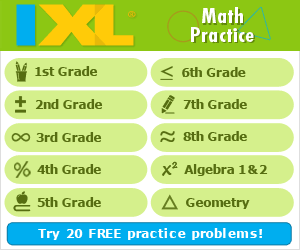How Grok AI can be used in Secondary Education
Grok, a generative AI chatbot by xAI, can enhance secondary education through personalized learning and real-time information access. Grok can assist with research, problem-solving, and language skills, but teachers must guide usage to ensure appropriateness - Grok is not meant for early elementary usage. And as with all generative AI, Grok usage requires keeping tabs on content accuracy and potential dependency, requiring careful monitoring in classrooms.
Some Background on Grok's Strengths
Grok, developed by xAI, is an AI chatbot with advanced reasoning and real-time web access, making it a promising tool for secondary education classrooms. Compared to other generative AI bots, Grok is extremely thorough, well-reasoned and it's documentation for the reasoning path behind each response is comprehensive.
There are four strong use cases in a secondary education environement:
- Personalized Learning: Grok can act as a virtual tutor, explaining complex topics in math, science, and programming, tailoring responses to student needs.
- Research Assistance: Its real-time access to the web and X helps students find up-to-date information for projects, especially useful for current events or social studies.
- Skill Development: It can support language skills, creative writing, and critical thinking by engaging students in conversations and problem-solving.
- Accessibility: Grok can assist students with disabilities, providing personalized support for inclusive learning.
Biggest Concerns regarding Grok
Grok offers a range of response styles. It defaults to a "neutral" personal assistant mode, but the end user can change modes to introduce bios with the result being that Grok will display a range of "personalities." TLDR: It's probably best to require students have Grok stick to it's most "vanilla" response mode. Again we'd recommend against it's personalities being set loose: Grok’s “rebellious” nature and sense of humor might lead to inappropriate content, so teachers will need to consistently monitor usage (as with any generative AI tool).
Asking the right question takes some practice. Accuracy can vary, so students should verify information with reliable sources. When asked a good, well structured question, Grok's ability respond is nothing short of amazing.
There’s also a risk of dependency, so it’s crucial to use Grok as a learning tool, not a shortcut for homework.
We're very early on integrating Generative AI into the Classroom
Use of Generative AI is a rapidly developing integration of technology into world of education. Grok was launched by xAI in 2023. It is based on a large language model (LLM) and is advertised as having a “sense of humor” and direct access to real-time data from the web and X. The latest version, Grok 3, released in February 2025, boasts advanced reasoning capabilities, performing well in benchmarks like mathematics and coding. As of April 2025, Grok’s adoption in secondary education is in it's early stages, given its recent advancements and limited specific case studies. Grok will likely become a transformative tool, especially for interactive and real-time learning.
Here's another drill down on possible uses for Grok:
Secondary education, encompassing grades 7 to 12, can leverage Grok in various ways, drawing from general AI chatbot applications in education:
- Personalized Learning and Tutoring: Grok’s advanced reasoning can explain complex concepts, such as solving mathematical problems or understanding scientific theories. For instance, it can provide step-by-step solutions, acting as a virtual tutor, which aligns with findings from a systematic literature review highlighting chatbots’ role in personalized learning.
- Research and Information Retrieval: With real-time access to the web and X, Grok can assist students in finding the latest information for projects or assignments. This is particularly valuable for current events or social studies, as mentioned in Tech & Learning’s guide, where it summarized recent football games, illustrating its potential for timely data.
- Language and Communication Skills: Grok’s conversational abilities can help students practice writing, grammar, and even foreign languages. It can simulate discussions, aiding in low-stakes skills practice like leading class debates, as suggested by Stanford’s teaching resources.
- Critical Thinking and Problem-Solving: By engaging with Grok, students can develop critical thinking skills, asking for hints or exploring different perspectives on problems. Its reasoning capabilities, refined through reinforcement learning, make it suitable for STEM subjects, as seen in its performance on the American Invitational Mathematics Examination, achieving 93.3% on xAI’s news page.
- Accessibility and Inclusivity: For students with disabilities, Grok can provide personalized assistance, such as reading text aloud or helping with organization, enhancing inclusive learning environments, as noted in general AI education discussions on Botpress Solutions.
Best Practices for Implementing Grok in Your Classroom
To maximize benefits and mitigate challenges, the following best practices can be adopted:
- Curate and Guide Usage: Teachers should provide specific instructions on how to use Grok, focusing on educational purposes. For example, set tasks like using Grok for research but require cross-verification with textbooks or academic databases.
- Verify Information: Encourage students to cross-verify Grok’s responses with reliable sources, such as Wikipedia or Stanford’s teaching resources, to ensure accuracy.
- Set Boundaries: Establish clear guidelines on appropriate questions, avoiding those that might elicit inappropriate content. This aligns with recommendations from a survey on AI in education, which showed growing support but emphasized responsible use.
- Monitor and Review: Regularly check student interactions with Grok to ensure content is suitable, as suggested in grokaimodel.com’s education guide, which advises reviewing AI outputs before sharing with classes.
Guest Blogger:
Bill Franklin, the CEO of Internet4Classrooms, is our guest blogger this month. He has been on the faculty at The George Washington University, has years of platform instructional experience, was a career Army Special Operations officer and also has decades of experience as a youth sports coach.
Search Internet4Classrooms








